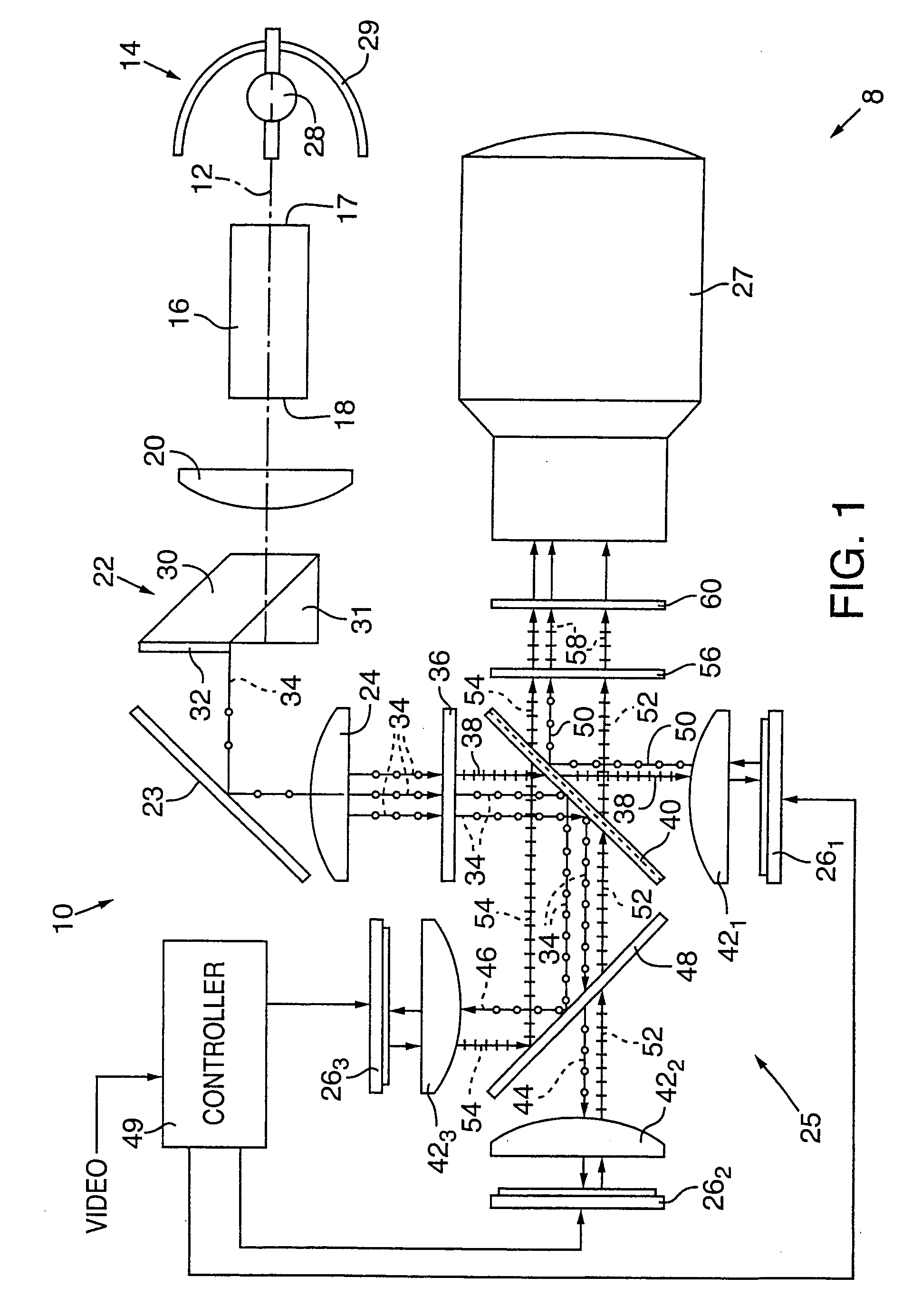Color video projection system employing reflective liquid crystal display devices
a liquid crystal display and video projection technology, applied in the direction of picture reproducers using projection devices, non-linear optics, instruments, etc., can solve the problems of high component cost, projection lens requires a long back working distance, stress birefringence, etc., to achieve less cost, less weight, and compact
- Summary
- Abstract
- Description
- Claims
- Application Information
AI Technical Summary
Benefits of technology
Problems solved by technology
Method used
Image
Examples
first embodiment
[0025] FIG. 1 is a simplified pictorial plan view of a multimedia projector showing a projector optical system of this invention.
second embodiment
[0026] FIG. 2 is a simplified pictorial plan view of a multimedia projector showing a projector optical system of this invention.
[0027] FIG. 1 shows an image projector 8 having an optical system 10 designed in accordance with a first embodiment of this invention and enclosed in and supported by a housing (not shown). Optical system 10 is constructed along an optical axis 12 and includes a light source 14; a light pipe optical integrator 16 having an inlet end 17 and an outlet end 18; a first positive lens 20; a polarization conversion prism assembly 22; a fold mirror 23; a second positive lens 24; a three-path reflective LCD assembly 25 that includes first, second, and third liquid crystal displays ("LCDs") 26.sub.1, 26.sub.2, and 26.sub.3 (collectively "LCDs 26"); and a telecentric-type projection lens 27. LCDs 26 are preferably about 15 millimeter (0.6 inch), reflective LCOS light valves employing twisted neumatic liquid crystal material, which is optically active. Of course, othe...
PUM
 Login to View More
Login to View More Abstract
Description
Claims
Application Information
 Login to View More
Login to View More - R&D
- Intellectual Property
- Life Sciences
- Materials
- Tech Scout
- Unparalleled Data Quality
- Higher Quality Content
- 60% Fewer Hallucinations
Browse by: Latest US Patents, China's latest patents, Technical Efficacy Thesaurus, Application Domain, Technology Topic, Popular Technical Reports.
© 2025 PatSnap. All rights reserved.Legal|Privacy policy|Modern Slavery Act Transparency Statement|Sitemap|About US| Contact US: help@patsnap.com



